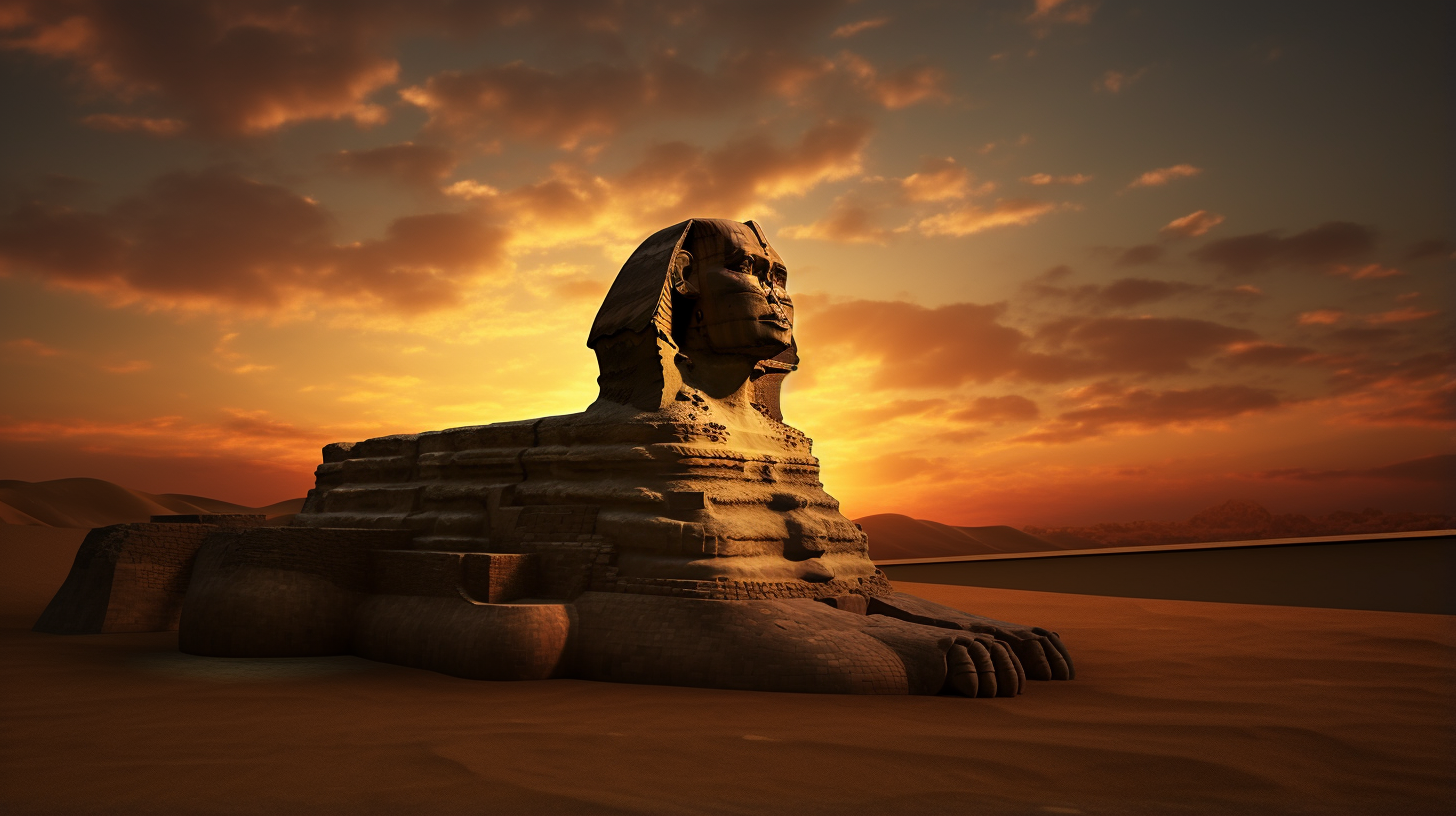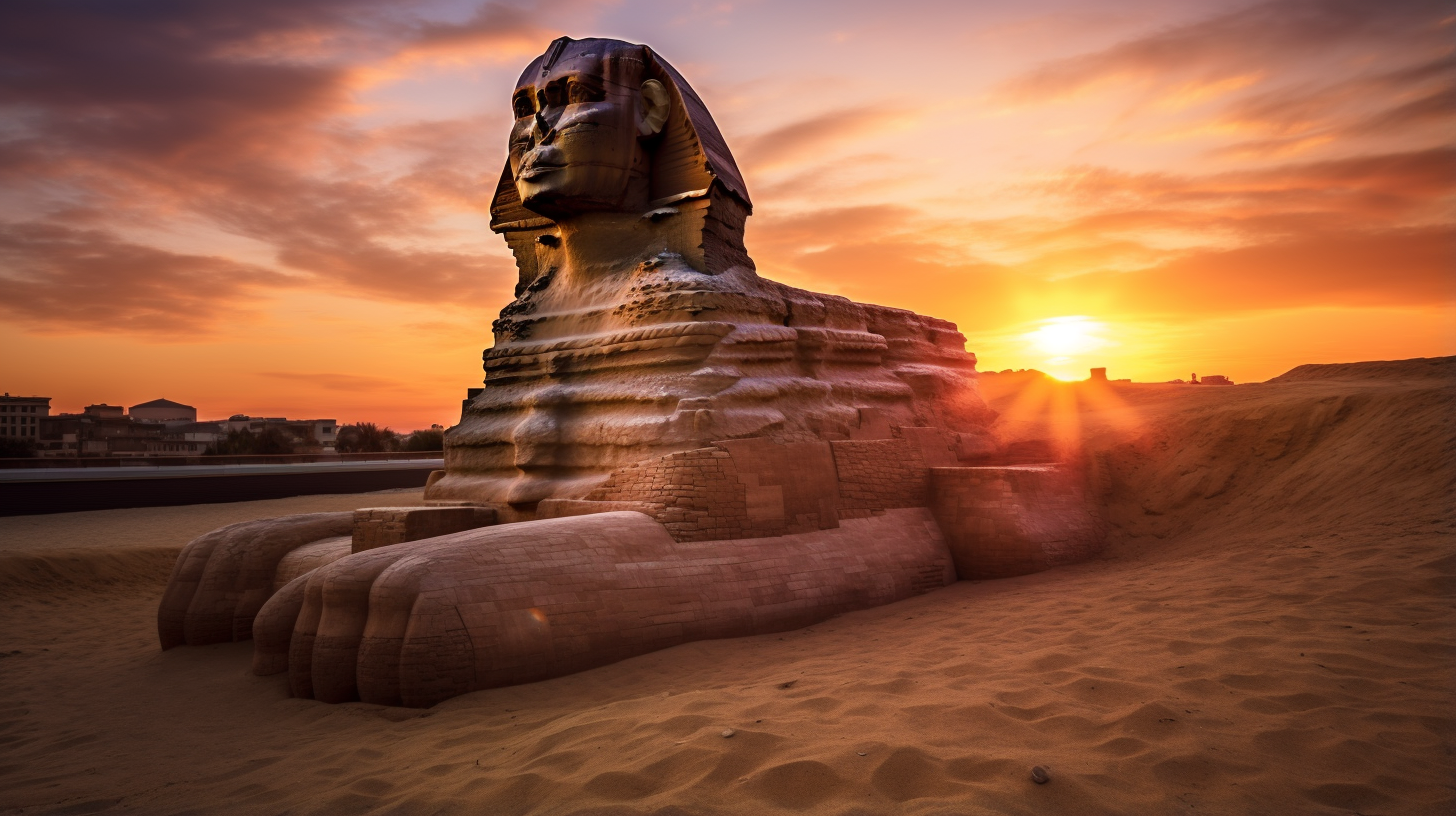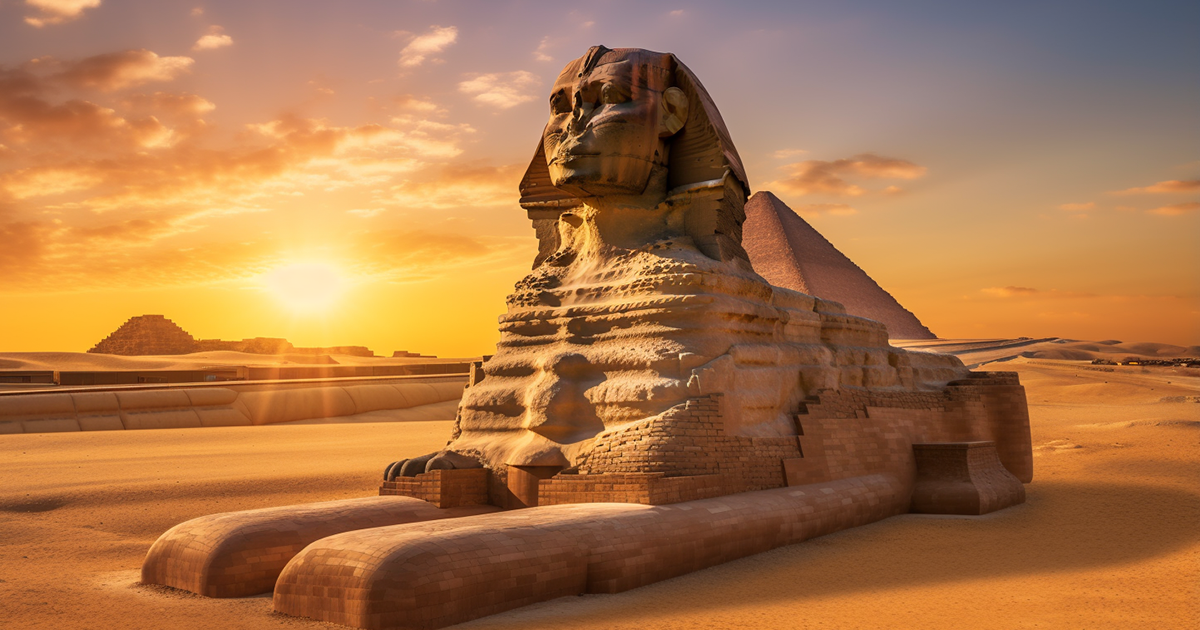When thoughts drift to Egypt, visions of immense pyramids, age-old tombs, and intriguing statues naturally emerge. Among these remarkable marvels stands the grand Sphinx, a monument that has captivated minds worldwide for generations.
Sitting proudly as a guardian on the Giza Plateau, this colossal statue, portraying a lion’s body with a pharaoh’s head, conceals a narrative veiled in enigma.
Nestled on a plateau to the west of the Nile River in Cairo, the Sphinx holds court over the Giza necropolis, an ancient complex thought to have risen during Egypt’s Fourth Dynasty around 2,550 BC. It is a site where visitors flock daily to witness the magnificence of the pyramids and the sphinx, a stone sentinel shrouded in mystery.
What truly captivates many about the Sphinx is its imposing scale. This immense statue stretches 240 feet in length, rises to a towering height of 66 feet, and spans 62 feet in width. Crafted from the natural rock of the Giza Plateau, this monolithic wonder stands as a testament to the ingenuity of ancient artisans.

Nevertheless, despite years of study and fascination, the Sphinx remains an unsolved enigma. Archaeologists and Egyptologists have devoted their lives to unraveling its mysteries, yet the Sphinx steadfastly guards its secrets.
A significant challenge in deciphering the Sphinx’s secrets lies in its long burial under the sands of time. For much of its existence, the Sphinx was buried up to its neck in desert sands, hiding its truth.
Even Emperor Napoleon gazed upon it when it was partially buried in the 18th century, reigniting curiosity in ancient Egypt.
Not until the 1920s did a team of archaeologists, under Emile Baraize’s leadership, successfully unearth the Sphinx from the desert sands, unveiling its full glory to the world. This moment marked a pivotal juncture in our comprehension of this ancient monument.
One prevalent theory posited by archaeologists suggests that King Chephren carved the Sphinx around 2,500 BC as part of his funerary complex. However, the true origins of the Sphinx remain a subject of lively debate and speculation.
Some experts reference the Inventory Stela, a commemorative stone documenting Pharaoh Khufu’s renovations to the Sphinx, which dates back around 4,600 years.

This raises queries about whether Khufu preceded Chephren, the traditional pharaoh attributed to the Sphinx’s creation.
Yet, what puzzles researchers is the evidence of weathering on the Sphinx’s body. Unlike the usual wind erosion on the Giza Plateau, the Sphinx displays water erosion signs, hinting at an existence during a time of milder Sahara Desert conditions with plentiful rainfall.
This evidence leads some to consider that the Sphinx may date back to the last Ice Age’s conclusion, roughly 10,000 BC, rendering it a relic from pre-dynastic Egypt.
Fascinatingly, the Sphinx might hold the key to unveiling ancient Egypt’s obscured past, one that precludes recorded history. As scholars persist in scrutinizing this enigmatic monument, they aspire to illuminate the Sphinx’s genuine age and purpose, peeling back history’s layers to expose the millennium-old secrets it hoards.
Video:
Amidst the ruins of an ancient civilization in Cairo, the Sphinx stands sentinel as time’s silent witness. While its mysteries lay buried deep, they persist in beckoning those who seek to decipher the enigmas of this astonishing monument. With its lion’s body and pharaoh’s head, the Sphinx remains an endless source of awe and fascination, urging us to plunge into the captivating riddle of ancient Egypt.
